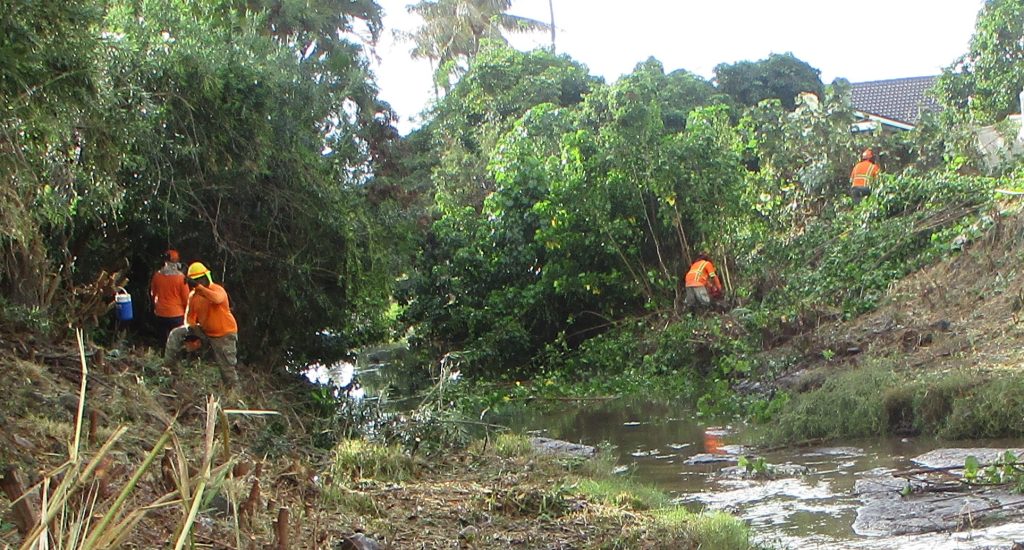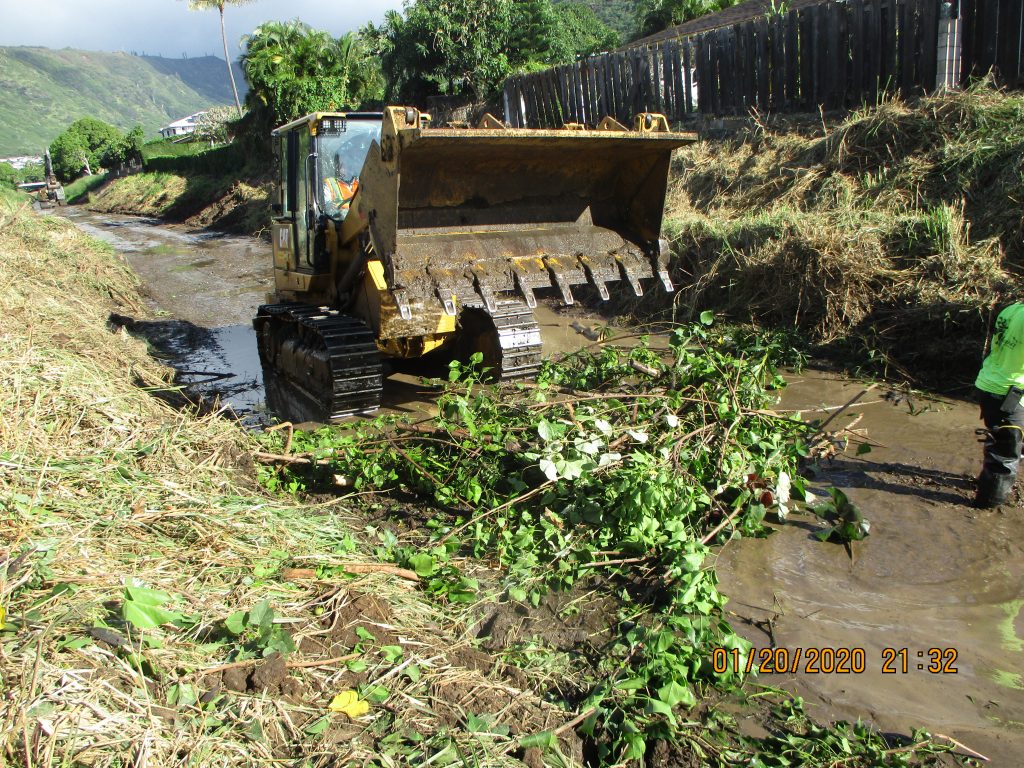Streams
Maintenance of waterways and stream frontage can help to lower the risk of flooding, control erosion, and preserve and improve ecosystem health and water quality. Streams on Oʻahu are owned by a combination of City, state, and private individuals and organizations. According to City ordinance, stream maintenance is the responsibility of each stream owner.
City Stream Cleaning
The City-owned streams segments are mostly channelized stream beds in urban areas with only a few naturalized stream segments. The City’s Clean Stream Program, under the Division of Road Maintenance, regularly cleans City-owned streams segments for water quality and flood prevention purposes. Information on planned stream cleaning operations is updated periodically on the Clean Stream Program website.
In certain locations, the Clean Stream Program performs maintenance work that requires the use of heavy machinery and weed whackers. Because of the nature of this work and the sensitivity of our local stream ecosystems, the City must regularly apply for a permit from the Army Corps of Engineers (ACE) to conduct its activities in the streambed or waterway. Visit the Clean Stream Program website to view the current ACE Stream Maintenance Permit.
Private Stream Ownership
Private stream owners are required to maintain their streams per Revised Ordinances of Honolulu. Article 26. Maintenance of Channels, Streambeds, Streambanks and Drainageways Sec. 41-26.3 Maintenance of streams. This Revised Ordinances of Honolulu states:
The owner of any stream has the duty to maintain, dredge and clear such stream so that the natural flow of water runs unimpaired. The owner shall also be responsible for the removal of any debris, vegetation, silt or other items or material of any kind, that may interfere with the natural flow of water or is likely to create an unsanitary condition or otherwise become a public nuisance. (Added by Ord. 89-59; Am. Ord. 17-38)
Maintaining Your Private Stream
Actions to maintain your private stream:
- Pick up litter and dispose of it along with your regular trash.
- Remove large debris such as large branches or fallen trees that impede stream flow to prevent flooding.
- Plant vegetation or use mulch to reduce soil erosion on your property.
- Plant suitable native vegetation in riparian zones and ensure plants are secure from being washed away during high-flow events.
Check out SeaGrant’s Streamside Guide for more tips and resources on Hawai‘i stream stewardship.
Homeowners can be held financially liable for improper stream management on their property if it contributes to flooding and damages neighboring property. Per the statute below, civil penalties for not complying with county regulations for stream maintenance may be up to $500 per day. Hawai‘i Revised Statutes [§46-11.5] Maintenance of channels, streambeds, streambanks, and drainageways.
Notwithstanding any law to the contrary, each county shall provide for the maintenance of channels, streambeds, streambanks, and drainageways, whether natural or artificial, including their exits to the ocean, in suitable condition to carry off storm waters; and for the removal from the channels, streambeds, streambanks, and drainageways and from the shores and beaches any debris which is likely to create an unsanitary condition or otherwise become a public nuisance; provided that to the extent any of the foregoing work is a private responsibility the responsibility may be enforced by the county in lieu of the work being done at county expense, and any private entity or person refusing to comply with any final order issued by the county shall be in violation of this chapter and be liable for a civil penalty not to exceed $500 for each day the violation continues; provided further that it shall be the responsibility of the county to maintain all channels, streambeds, streambanks, and drainageways unless such channels, streambeds, streambanks, and drainageways are privately owned or owned by the State, in which event such channels, streambeds, streambanks, and drainageways shall be maintained by their respective owners. [L 1986, c 121, §2]


Stream Water Quality Monitoring
The City monitors water quality including that of selected streams. The water quality monitoring plan is included as an appendix in the Storm Water Management Program Plan and the Annual Report contains the water quality data.
